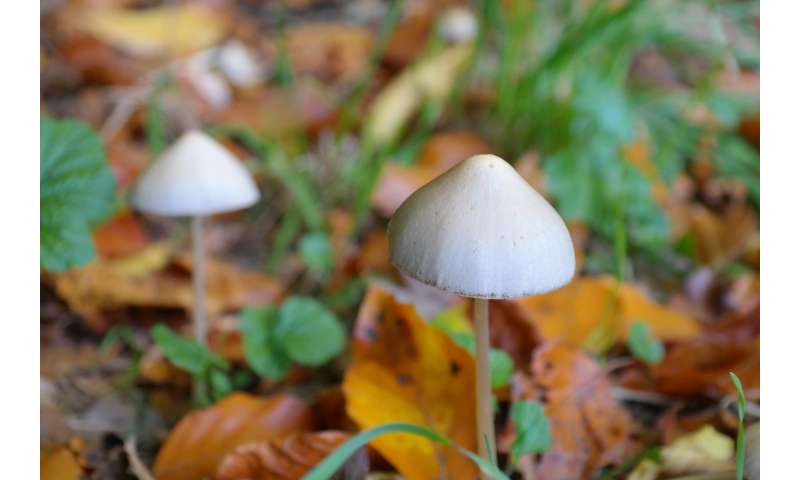
An international team of researchers has built a biophysically realistic whole-brain model to explain the impact of psilocybin on the brain. In their paper published in Proceedings of the National Academy of Sciences, the group describes how they built their model and what they believe it shows.
Consumption of magic mushrooms results in hallucinogenic symptoms along with feelings of enlightenment and changes in perception. The active ingredient in such mushrooms is psilocybin—an alkaloid. Prior research has suggested that in addition to its hallucinogenic effects, psilocybin can also sometimes reduce symptoms of depression and some other mental illnesses. But how it does so has remained a mystery. In this new effort, the researchers undertook a large-scale effort to find out what psilocybin does to the brain.
The work involved obtaining and analyzing diffusion data from 16 volunteers who had undergone MRI scanning, recruiting another 210 volunteers for PET scans, and recruiting an additional nine patients to undergo MRI scans while under the influence of either psilocybin or saline that served as a control. The researchers combined all the amassed data and used it to build a biophysically realistic whole-brain model that showed neurons and neurotransmitters as they worked together under normal circumstances and then as psilocybin was introduced.
Source: Read Full Article
